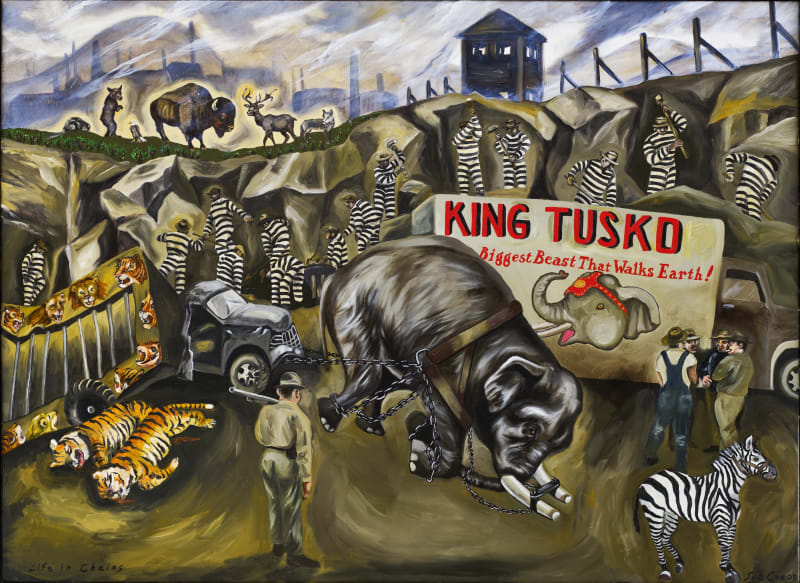Nietzsche’s desire to throw his arms protectively around the neck of a brutalized horse being savagely whipped by its owner was his last act of sanity, seconds before he collapsed into dementia. By contrast, Sue Coe’s determination to draw attention to the inhumane treatment of animals has produced a broad twenty-year body of clear-sighted and powerful works that articulate a maddening frustration with mankind’s treatment of our fellow creatures. In “Elephants We Must Never Forget,” Coe presents a series of fourteen new expressionistic oil paintings, alongside more than a dozen lithographs, woodcut prints, and drawings that depict the stories of anonymous and historically specific elephants. Though many of her paintings contain text narrating the disheartening stories, her work is not merely illustrative. Instead, her canvases have the gory, grotesque, cartoonish quality of German Expressionism. As a passionate, politically invested, and persuasive artist, Coe puts brutality in context, describing the kinship between the elephants and disenfranchised, exploited people including African Americans, deformed circus performers, blind children, and women acrobats performing on the high wire without nets. Four large drawings and one etching depict the gut-wrenching story of Topsy, a domesticated circus elephant. (Topsy was electrocuted at Coney Island after she killed her severely abusive trainer; as entertainment, Thomas Edison released a film of her death.) However, Coe’s paintings are light-years away from opportunist sensationalism. Like Tod Browning's 1932 film Freaks, Coe’s haunting images show us who the real beasts in the circus are.
Sue Coe Exhibition Review, Elephants We Must Never Forget
Ana Finel Honigman, Artforum, November 22, 2008
